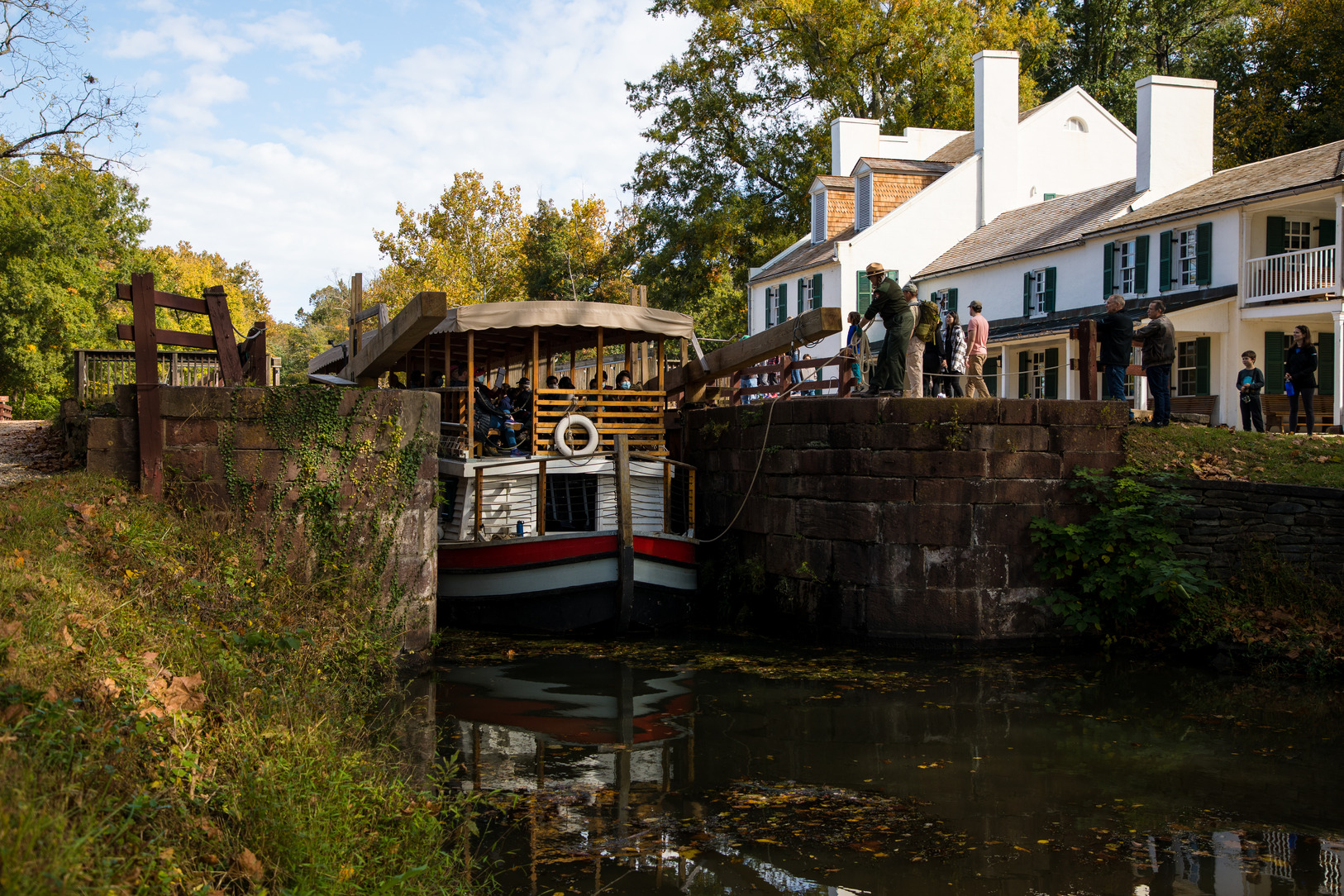  Right Side: Historic Boat Entering a Lock Left Side: Modern Boat in a Lift Lock What are Lift Locks?NPS/Harpers Ferry Center Why are Lift Locks Important?Lift Locks are important for many reasons. Here are just a few:
Who was responsible for the Lift Locks?The Lockkeepers! They were hired by the C&O Canal Company to operate the lift locks they were assigned to. Lift Lock Basics Everything you need to know about lift locks!
There are 74 locks in total! You may say, "But there is a lock named Lock 75!" And that is because Lock 65 doesn't exist. When the canal was consructed they realized that they didn't need to build a Lock 65. The builders found it was too much work to change the name of every lock after 65 in the paperwork.
About 8 to 10 minutes but the record of the fastest time was about 5 minutes.
Now that's a big question that requires some context.
Photo Credit: Artist: Demers, Donald Contacts: Organization: Harpers Ferry Center Let's begin the locking-through process. There are a few operation lift locks in the park. There are some in Georgetown, DC and one at the Great Falls Taven. The lift lock in Williamsport is not operational but is a good model of what one would look like.
|
Last updated: December 16, 2023
